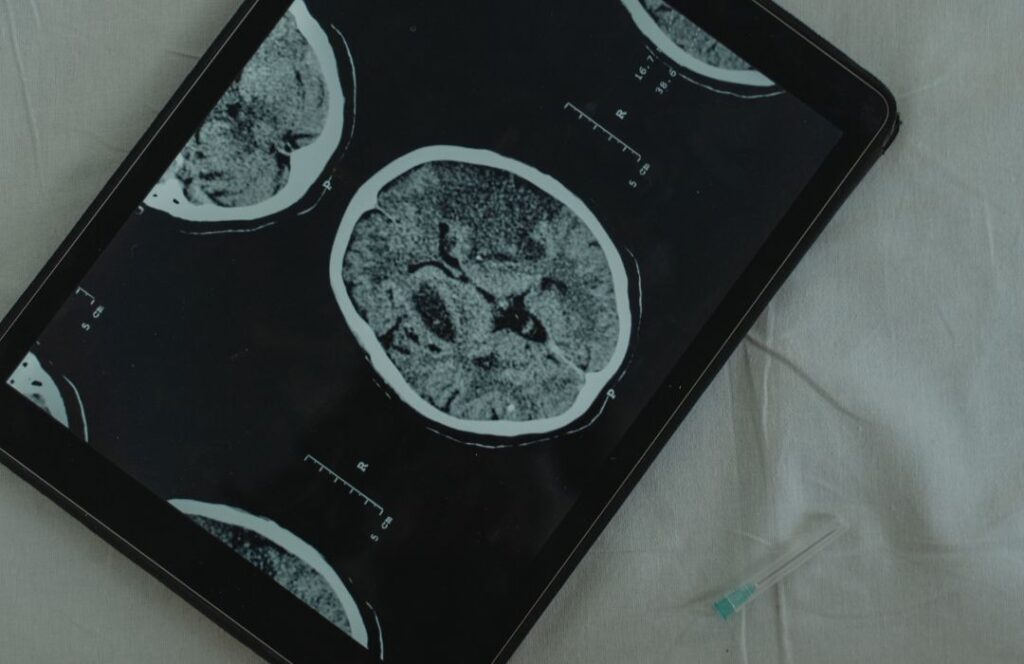What is a brain tumor?
A brain tumor is an abnormal growth of cells within the brain or the central spinal canal. These tumors can be benign (non-cancerous) or malignant (cancerous), and they can arise from various types of cells in the brain, including neurons, glial cells, and meninges. The exact cause of most brain tumors is still unknown, but genetic factors, exposure to certain chemicals, and radiation may contribute to their development.
The brain is a complex organ that controls various functions of the body, such as movement, sensation, speech, and cognitive abilities. It is divided into different regions, each responsible for specific functions. When a tumor develops in the brain, it can interfere with normal brain function, leading to a range of symptoms and complications.
Brain tumors are classified based on their location, type, and grade. Location refers to the specific part of the brain where the tumor originates, while type refers to the kind of cells the tumor is composed of. The grade indicates the degree of malignancy, with Grade I being the least aggressive and Grade IV being the most malignant.
There are two main types of brain tumors: primary and metastatic. Primary tumors originate within the brain or spinal cord, while metastatic tumors spread to the brain from other parts of the body. Metastatic brain tumors are more common than primary tumors and are often secondary to cancers in the lung, breast, kidney, or other organs.
Primary brain tumors can further be categorized into gliomas, meningiomas, pituitary adenomas, and others. Gliomas are tumors that arise from glial cells, which support and nourish the neurons. Meningiomas originate from the meninges, the layers of tissue covering the brain and spinal cord. Pituitary adenomas develop in the pituitary gland, a small gland at the base of the brain that regulates hormone production.
The symptoms of a brain tumor can vary depending on its size, location, and rate of growth. Common symptoms include headaches, seizures, changes in vision, difficulty speaking or understanding language, weakness or numbness in the limbs, and changes in personality or mood. These symptoms can be subtle and may develop gradually, making the diagnosis challenging.
Diagnosing a brain tumor typically involves a combination of medical history, neurological examination, imaging studies, and sometimes a biopsy. Imaging techniques such as magnetic resonance imaging (MRI) and computed tomography (CT) scans are crucial for visualizing the size, location, and characteristics of the tumor. A biopsy, which involves removing a small tissue sample for examination, can help determine the type and grade of the tumor.
Once a brain tumor is diagnosed, the treatment plan is tailored to the specific characteristics of the tumor and the overall health of the patient. Treatment options include surgery, radiation therapy, and chemotherapy. The choice of treatment depends on factors such as the tumor type, location, size, and grade, as well as the patient’s age and overall health.
Surgery is often the primary treatment for accessible tumors. The goal is to remove as much of the tumor as possible while preserving surrounding healthy tissue. In some cases, complete removal may not be feasible due to the tumor’s location or the risk of damaging critical brain structures. In such instances, a partial removal or biopsy may be performed.
Radiation therapy uses high-energy rays to target and destroy cancer cells. It can be delivered externally using a machine outside the body or internally by placing radioactive material directly into or near the tumor. Radiation therapy is often employed after surgery to eliminate any remaining cancer cells and prevent recurrence.
Chemotherapy involves the use of drugs to kill or slow the growth of cancer cells. While chemotherapy is commonly used for systemic cancers that can spread throughout the body, its effectiveness in treating brain tumors is limited due to the blood-brain barrier, which restricts the passage of many drugs into the brain. However, certain chemotherapy agents may still be used, especially in conjunction with other treatments.
In recent years, advancements in targeted therapies and immunotherapy have shown promise in the treatment of certain types of brain tumors. Targeted therapies aim to interfere with specific molecules involved in the growth and survival of cancer cells, while immunotherapy harnesses the body’s immune system to recognize and attack cancer cells.
Despite these treatment options, managing brain tumors can be challenging, and the prognosis varies widely depending on the type and grade of the tumor, as well as the individual patient’s response to treatment. Benign tumors are generally associated with a better prognosis, as they tend to grow more slowly and are less likely to invade surrounding tissues. Malignant tumors, on the other hand, can be more aggressive and may require more intensive and prolonged treatment.
The impact of a brain tumor extends beyond physical health, affecting the emotional and psychological well-being of patients and their families. Coping with the diagnosis, undergoing treatment, and managing potential side effects can be emotionally challenging. Support from healthcare professionals, social workers, and support groups can play a crucial role in helping patients and their families navigate the complexities of living with a brain tumor.
In conclusion, a brain tumor is an abnormal growth of cells within the brain or spinal cord, with the potential to disrupt normal brain function and lead to a range of symptoms. The diagnosis and treatment of brain tumors involve a multidisciplinary approach, considering factors such as tumor type, grade, and location, as well as the patient’s overall health. Advances in medical technology and research continue to improve our understanding of brain tumors and enhance treatment options, offering hope for better outcomes for individuals affected by these complex and challenging conditions.

Brain tumor signs and symptoms
The signs and symptoms of a brain tumor can vary widely depending on its size, location, and rate of growth. It’s important to note that many of these symptoms can also be caused by conditions other than brain tumors. However, if you experience any persistent or worsening symptoms, it is crucial to seek medical attention for a thorough evaluation. Here are some common signs and symptoms associated with brain tumors:
Headaches:
- Persistent, new-onset headaches are a common symptom.
- Headaches associated with brain tumors are often more severe in the morning and may improve throughout the day.
Seizures:
- Seizures can occur when abnormal electrical activity in the brain is triggered by the tumor.
- Seizures may present as convulsions, unusual sensations, or temporary loss of consciousness.
Changes in Vision:
- Blurred or double vision can occur when a tumor affects the optic nerves or other visual pathways.
- Loss of peripheral vision or seeing flashes of light may also be a symptom.
Speech and Language Difficulties:
- Difficulty speaking or slurred speech.
- Problems with comprehension or understanding language.
Motor Skills and Coordination Issues:
- Weakness or numbness in the limbs, often on one side of the body.
- Lack of coordination or balance problems.
Cognitive Changes:
- Memory problems and difficulty concentrating.
- Changes in personality or behavior.
- Gradual decline in cognitive function.
Nausea and Vomiting:
- Unexplained nausea and vomiting, particularly in the morning.
- These symptoms may be associated with increased intracranial pressure.
Changes in Sensation:
- Tingling or numbness, especially on one side of the body.
- Changes in the sense of touch or the ability to feel heat or cold.
Altered Mental Status:
- Confusion or disorientation.
- Changes in mood or personality.
Difficulty with Everyday Tasks:
- Trouble with daily activities such as writing, dressing, or using utensils.
It’s important to note that the severity and combination of symptoms can vary greatly among individuals. Additionally, some brain tumors may not cause noticeable symptoms until they reach a certain size or location. If you or someone you know experiences persistent or concerning symptoms, it is essential to consult with a healthcare professional for a thorough evaluation, which may include imaging studies such as MRI or CT scans, as well as other diagnostic tests to determine the cause of the symptoms. Early detection and diagnosis can play a crucial role in the successful management of brain tumors.
types of brain tumor
Brain tumors can be classified based on various factors, including their location, type of cells involved, and whether they are benign or malignant. Here are some common types of brain tumors:
Gliomas:
- Gliomas are the most common type of primary brain tumors and originate from glial cells, which support and nourish neurons. Types of gliomas include:
- Glioblastoma Multiforme (GBM): This is a highly aggressive and malignant glioma, often referred to as Grade IV glioma.
- Astrocytoma: These tumors arise from astrocytes and can vary in grade, with higher grades being more aggressive.
- Oligodendroglioma: Originating from oligodendrocytes, these tumors are often slower-growing compared to other gliomas.
- Gliomas are the most common type of primary brain tumors and originate from glial cells, which support and nourish neurons. Types of gliomas include:
Meningiomas:
- Meningiomas are tumors that develop from the meninges, the layers of tissue covering the brain and spinal cord. They are typically slow-growing and are often benign.
Pituitary Adenomas:
- Pituitary adenomas form in the pituitary gland, a small gland at the base of the brain that regulates hormone production. These tumors can affect hormone levels and cause various symptoms.
Medulloblastomas:
- Medulloblastomas are primarily found in the cerebellum and are most common in children. They are malignant and tend to grow rapidly.
Acoustic Neuromas (Vestibular Schwannomas):
- Arising from the Schwann cells of the vestibular nerve, these tumors usually affect the hearing and balance nerve. They are typically benign.
Pineal Gland Tumors:
- Pineal gland tumors occur in the pineal gland, which is involved in the regulation of sleep-wake cycles and melatonin production. Types include pineocytomas and pineoblastomas.
Craniopharyngiomas:
- Craniopharyngiomas develop near the pituitary gland and often affect hormonal balance. They are typically benign but can cause significant symptoms due to their location.
Primary Central Nervous System (CNS) Lymphomas:
- These are lymphomas that primarily affect the brain, spinal cord, or the cerebrospinal fluid. They are often non-Hodgkin lymphomas.
Ependymomas:
- Ependymomas arise from ependymal cells lining the ventricles of the brain and the central canal of the spinal cord. They can occur at any age and may be benign or malignant.
Chordomas:
- Chordomas develop from remnants of the notochord, a structure present during embryonic development. They are often found at the base of the skull or along the spine.
Hemangioblastomas:
- Hemangioblastomas are vascular tumors that commonly occur in the cerebellum and can be associated with von Hippel-Lindau disease.
Metastatic Brain Tumors:
- Metastatic tumors in the brain are secondary tumors that have spread to the brain from other parts of the body. Common primary sources include lung, breast, kidney, and skin (melanoma) cancers.
The classification and naming of brain tumors are based on histological characteristics, genetic markers, and other features observed under a microscope. Each type of brain tumor may present with different symptoms, require specific treatment approaches, and have varying prognoses. It’s important to note that the information provided here is a general overview, and specific cases may vary. A comprehensive diagnosis by a healthcare professional is essential for proper treatment planning.
Conclusion about brain tumor
In conclusion, brain tumors represent a diverse group of neoplasms that can arise from different types of cells within the brain or central nervous system. The impact of these tumors on an individual’s health can vary widely, depending on factors such as the type, location, grade, and size of the tumor. Whether benign or malignant, brain tumors can lead to a range of symptoms, affecting cognitive function, motor skills, and overall quality of life.
Diagnosis and treatment of brain tumors require a multidisciplinary approach involving neurologists, neurosurgeons, oncologists, and other healthcare professionals. Early detection and accurate diagnosis are crucial for effective management and improved outcomes. Advanced imaging techniques, such as magnetic resonance imaging (MRI) and computed tomography (CT), play a vital role in visualizing the tumor and guiding treatment decisions.
Treatment modalities for brain tumors include surgery, radiation therapy, chemotherapy, targeted therapies, and immunotherapy. The choice of treatment depends on various factors, including the tumor type, grade, location, and the patient’s overall health. Surgical intervention aims to remove as much of the tumor as possible while preserving healthy brain tissue. Radiation therapy and chemotherapy may be employed to target remaining cancer cells or shrink tumors before surgery.
While advancements in medical research and technology have expanded treatment options, managing brain tumors remains complex. The prognosis for individuals with brain tumors can vary significantly, and factors such as the aggressiveness of the tumor, response to treatment, and overall health play critical roles in determining outcomes.
Living with a brain tumor not only involves physical challenges but also emotional and psychological adjustments for patients and their families. Support from healthcare professionals, social workers, and support groups is essential in navigating the complexities of treatment, coping with the emotional impact of a diagnosis, and enhancing overall well-being.
Ongoing research continues to improve our understanding of the molecular and genetic characteristics of brain tumors, leading to the development of targeted therapies and personalized treatment approaches. As our knowledge grows, the hope is to further refine diagnostic methods, enhance treatment efficacy, and ultimately improve the overall prognosis and quality of life for individuals affected by brain tumors. Early detection, comprehensive care, and a collaborative approach between patients, caregivers, and healthcare providers are crucial elements in addressing the challenges posed by brain tumors and working towards better outcomes.



